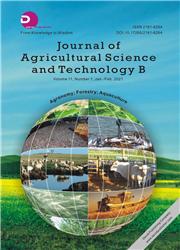Brief Introduction to a Unique Edible Bolete—Phlebopus portentosus in Southern China
引用次数: 18
Abstract
Phlebopus portentosus (Berk. and Broome) Boedijn is a favored wild edible mushroom in the Xishuangbanna region, Yunnan, China and Northern Thailand. It belongs to Boletinellaceae family and is known as “black bolete”. Its ecological habits and biotrophy are very complicated. It can be saprobic and successfully cultivated in mushroom house conditions. More often it grows closely with many plants, but is not mycorrhizal fungus. It forms a tripartite association with root mealy bugs and plants. The fungus produces special fungus-insect gall with the soil mealy bugs, which is a symbiotic association between these two creatures. The gall grows on plant roots with parasitic tendency. This paper is a compact report of the findings, including taxonomy, ecology, economic and cultivation of this mushroom.标题中国南方一种独特的可食昆虫——门状白蛉(phlebopus portentosus)简介
波地蘑菇(Phlepopus portentosus,Berk.and Broome)是西双版纳地区、中国云南和泰国北部的一种受欢迎的野生食用蘑菇。它属于牛肝菌科,被称为“黑牛肝菌”。其生态习性和生物营养十分复杂。它可以是腐生的,并在蘑菇屋条件下成功栽培。更多的时候,它与许多植物紧密生长,但不是菌根真菌。它与根粉虫和植物形成了三方联系。这种真菌与土壤粉虫产生特殊的真菌昆虫胆汁,这是这两种生物之间的共生关系。胆囊生长在有寄生倾向的植物根部。本文对蘑菇的分类、生态学、经济和栽培等方面的研究成果进行了简要的报道。
本文章由计算机程序翻译,如有差异,请以英文原文为准。
求助全文
约1分钟内获得全文
求助全文

 求助内容:
求助内容: 应助结果提醒方式:
应助结果提醒方式:


